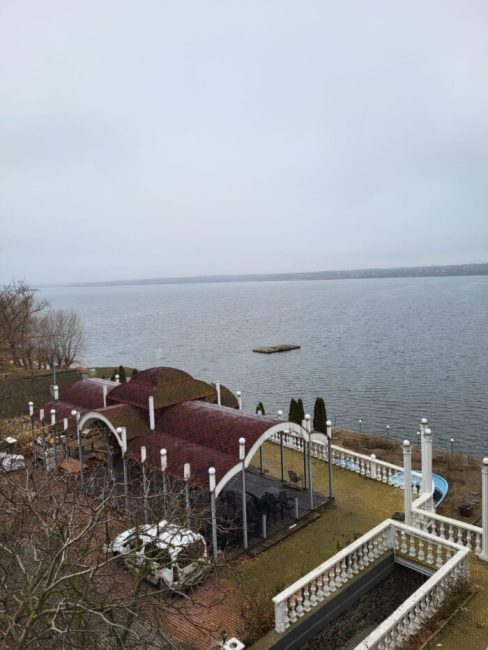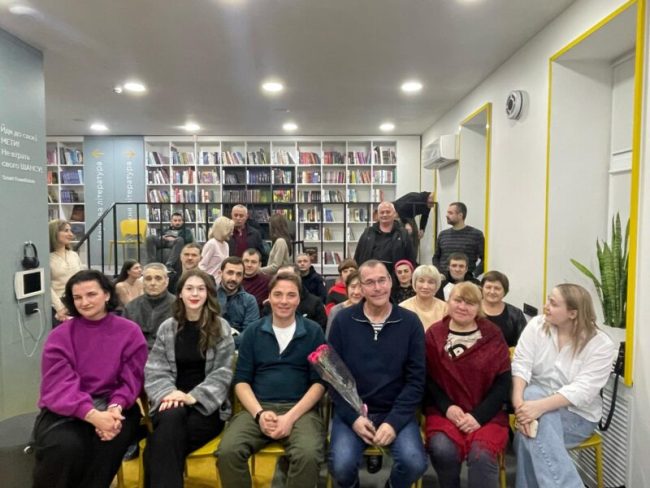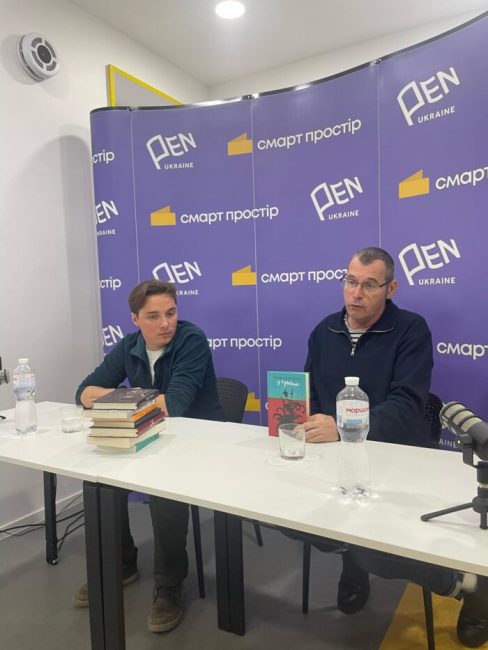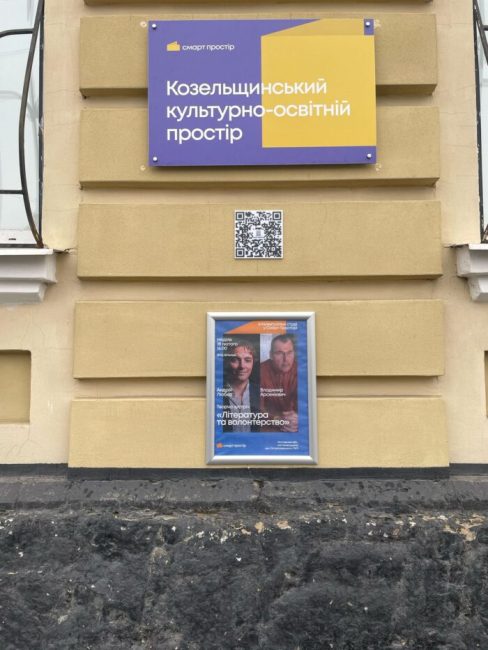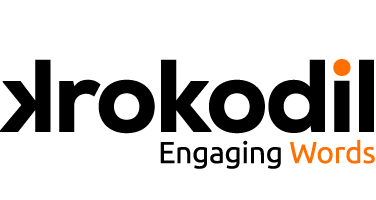2024
BELGRADE-UZHHOROD-ODESA-KHERSON, FRIDAY, FEBRUARY 16
It’s 5:30 PM local time. We are driving through beautiful Galicia in a convoy of ten military and medical vehicles. On the slopes on both sides of the uneven, pothole-filled road, picturesque wooden houses with carved and painted porches pass by. At occasional bus stops, blue and yellow flags flutter. The gas stations are modern and infinitely well-stocked, but we also pass billboards calling for defense against the enemy, occasional ruins, and military checkpoints with anti-tank barriers and camouflage nets. All the while, a tall, snow-capped mountain looms in front of us. “It looks like Fuji,” says Milan as we speculate what it could be.
This is Ukraine in 2024, just days before a dual anniversary: ten years since the annexation of Crimea and two years since the comprehensive invasion, which many here believed would last much shorter than it unfortunately seems today. Today, it seems it could last forever. Nonetheless, the morale and humor of the people we are traveling with remain remarkably high. Ukrainians are resilient, tough, and used to all sorts of hardships. Courage, as the local proverb says, is made in Ukraine.
We embarked on this journey to deliver aid to the citizens of Kherson, starting yesterday from Belgrade, which now feels endlessly far away. We traveled through Serbia and Hungary, spent hours hammering through border crossings, and slept in a hotel just before the Hungarian-Ukrainian border near Zahony. Drawing from our experience in 2022, when we first traveled to Ukraine to deliver aid to the City Perinatal Center in Kharkiv, a city on the far east affected by war activities, we knew we had to spend the night in our cars right at the border, waiting for the central border office in Kyiv to open and issue us a permit to enter the country. This was due to the caution with which the local authorities approach holders of Serbian passports, given the infamous fact that a large number of war dogs, miserable mercenaries, and Russian occupation servants come from our country. We knew it was smartest to appear at the border at a normal time. And indeed, this time everything went smoothly, so we soon entered Ukraine and met our friend and partner in these actions, Andriy Lyubka, and his group of associates (some of whom were with us last year when we delivered humanitarian aid to Blyzniuky) in the border town of Uzhhorod. They helped us transfer over two tons of our humanitarian aid (comprising essential and hygiene supplies, divided into two hundred so-called “survival packages”) from the vehicle we brought from Belgrade to the medical van with which we will continue our long journey to Kherson.
We left Uzhhorod a little after two o’clock local time and are still driving through the relatively peaceful, war-unaffected western part of the country. However, we know that the situation becomes increasingly dangerous and tense, and the tragedy more present, the further east and south one goes. This time, we received special first aid kits and walkie-talkies that should help us in case something unforeseen happens. Russian drones, after all, constantly hover over Kherson, often dropping deadly cargo on anything that raises suspicion from those who remotely control them. A convoy of vehicles, some bearing the Red Cross symbol while others are camouflaged and adorned with the Ukrainian trident, is not something that will easily escape the gaze of this new breed of sniper equipped with remotely controlled drones. In this sense, it’s hard to understand how this unimpressive kit with gauze, plasters, blood-stopping bandages, scissors, and similar items will save us in such a situation. But certainly, we shouldn’t burden ourselves with such thoughts. The most important thing is to drive and drive through all these thousands of kilometers ahead of us, finally reaching the people for whom such an atmosphere is everyday life, and deliver the collected aid. We’ll somehow make it through this hell with our heads on our shoulders and return home.
We will continue this report tomorrow. Milan is currently at the wheel, so I’ll take over from him in about two hours. And so, through the entire day and the entire night until morning. After a whole long night spent constantly driving, a short and uncomfortable two-hour sleep awaits us on the seats of this same van before dawn, before we continue this journey through the vast country, seemingly without end.
Until the next update, then, tomorrow around the same time – Всього́ найкра́щого!



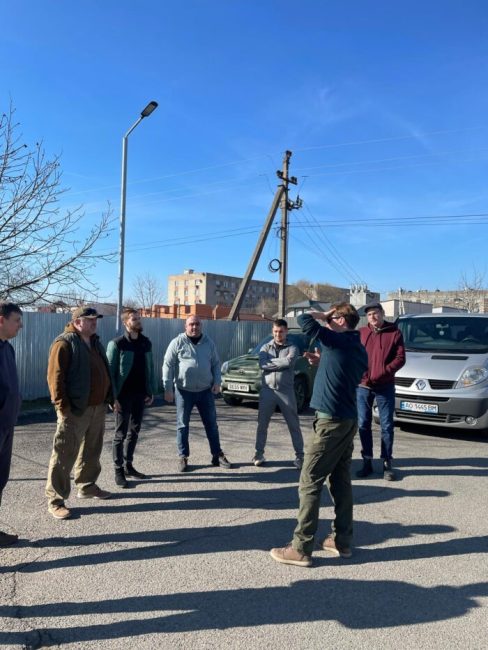
DAY 2, ODESA-KHERSON, Saturday, February 17
The cat is the unofficial symbol of Odesa, a port city with a rich history and a distinctly urban pulse. Similar to Istanbul, its citizens take care of the city’s cats even in the hardest times, so you can see bowls of food and water on almost every corner. The city, visually dynamic as it is, is filled with graffiti and murals of this animal, giving it a uniquely tame, intelligent look that stands in poignant contrast to the dire and tragic state Odesa and all of Ukraine have been in for a long time, with no end in sight. Most of these murals are signed by the street artist group LBWS 168, and besides adorning many walls in Odesa, they can also be found in various other cities across Ukraine.
Destruction is visible in this city where baroque buildings and squares alternate with classical palaces, modernist public buildings, and socialist residential blocks (Khrushchyovkas) and monuments, giving its streets an incredible sense of history that flows and rolls, often brutally and too often, unfortunately, directly over people’s heads.
The fact that Odesa’s historical core is under UNESCO protection paradoxically prevents or bureaucratically endlessly slows down the restoration of shelled buildings in the center, so the shelling holes in their facades still gape terrifyingly despite Ukrainians’ will to repair them and restore the buildings they are so proud of to their original state as quickly as possible.
Due to various incidental obligations and the fact that one of the vehicles in our convoy broke down literally at the entrance to Odesa, our journey to Kherson was delayed so much that we entered the war-torn city where the Dnipro River meets the Black Sea around eight in the evening, just before curfew. After passing through rigorous control and heading to the Baptist church, the final destination of our journey that had already stretched to a full 2,000 kilometers, the completely deserted streets of Kherson were literally plunged into inky darkness, occasionally cut by the dimmed headlights of oncoming (mostly military) vehicles.
The war fought here is a perfidious one with drones equipped with destructive grenades that Russian forces (located just 2 km from the free part of the city) drop on practically everything that moves. The tension in the city is so palpable that you can literally feel it, something we haven’t encountered or felt anywhere else we’ve been in this unjustly attacked country, and we’ve been to many places affected by intense military operations. All of this, or almost all of it, was compensated by the sky dotted with stars and the beautiful, shining moon above our heads.
Together with the staff at the Invincibility Point at the Baptist church, we unloaded all the humanitarian aid, had a brief conversation, and warmly said our goodbyes before heading to Mykolaiv, where we planned to sleep in a shelled hotel by the Buh River (guided by the unconvincing logic that a once-shelled building would not be targeted again soon). Meanwhile, they stayed where life is bleak and tragic, and where our instructions were to distribute the supplies we brought into planned “survival packages” and prepare them for the next day’s gathering at the Invincibility Point. They would continue to selflessly help the remaining citizens of this unfortunate ghost town day by day to somehow survive these challenging, difficult times and await freedom and the final return to normalcy.
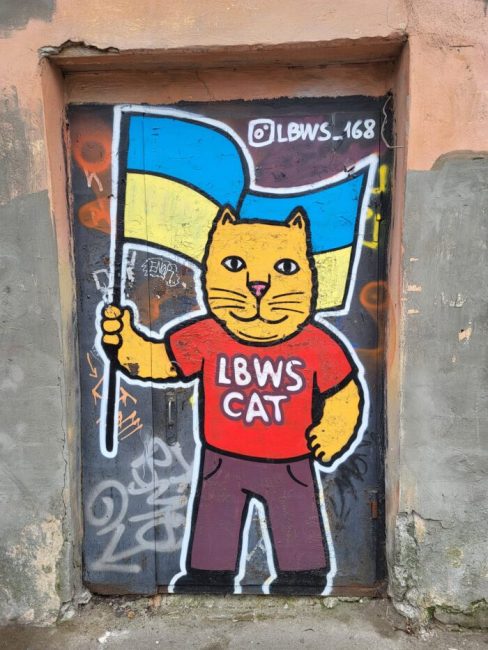
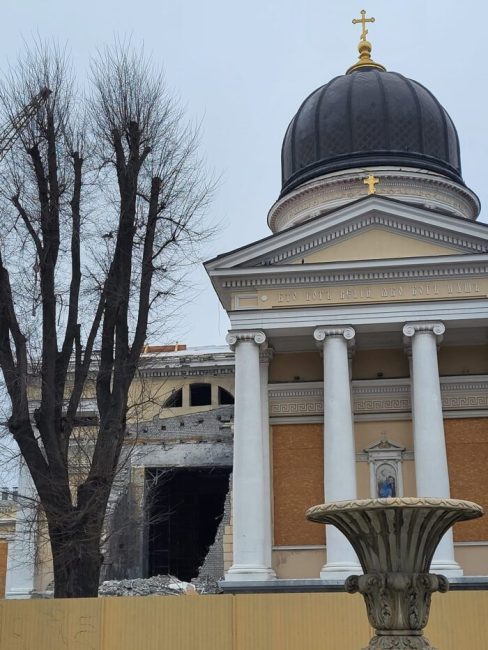
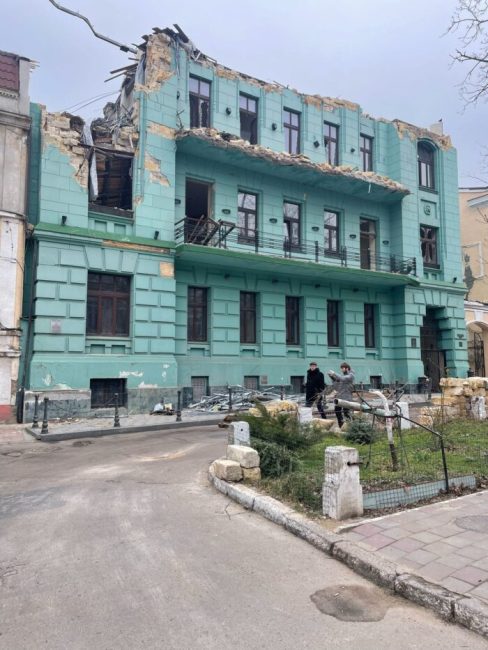

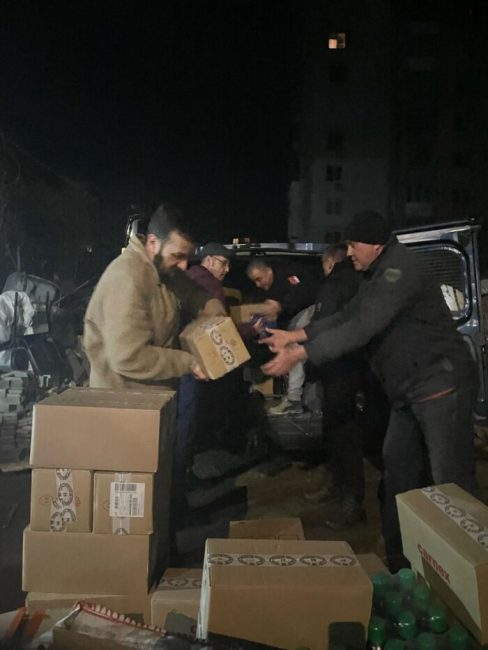
RETURN: MYKOLAIV-KOZELSHCHYNA-UZHHOROD-KISVÁRDA, Sunday and Monday, February 18-19
Kozelshchyna is a settlement in the Poltava region in central Ukraine. As is often the case with small Ukrainian towns, of which there are hundreds in this country, the outward appearance can be quite deceiving. When you turn off the main road and reach the center via muddy, poorly paved streets full of potholes, bordered by low, gray, and utterly unimpressive houses, the first impression is inevitably quite sad.
But when you meet the local people, that impression changes abruptly, often accompanied by other surprises, some of which Kozelshchyna successfully provided us.
We arrived there after getting only a few hours of sleep on the night from Saturday to Sunday, relieved of 1,700 kilograms of food and hygiene supplies that we had left in Kherson during the dark, oppressive Saturday evening in the middle of the curfew. We spent that night in Mykolaiv, in a hotel on the banks of the Buh River, which had been hit in recent shelling, leaving one of its wings under reconstruction. The next morning, over breakfast, from the empty dining room overlooking the river, I watched the wide mass of gray water lazily flowing by, indifferent to the abandoned tourist facilities along its banks that no one had used for a long time because no one comes here anymore. Yet, Mykolaiv almost seems like a normal city compared to Kherson, 75 kilometers away, where only about thirty percent of the population remains – mostly those who have nowhere else to go and who daily endure the terror of drones that constantly fly over the city, hoping that it will all end one day and that they will see peace with their heads still on their shoulders. It made no sense to go further from there. We had traveled 2,000 kilometers from Belgrade to Kherson, and it was time to start the equally long journey back, with the first stop being the mentioned Kozelshchyna.
Although it was at least six hours of driving from us, we had to get there by three o’clock because Andriy and I had a scheduled panel on literature and activism at the local center called “Smart Prostir.” We didn’t know what to expect, so our surprise was all the more intense. In the building of the former library in a town with barely 3,500 inhabitants, a phenomenal ultra-modern multimedia center was built, primarily intended for local children and youth. It includes separate spatial segments designed for different activities, such as a fully equipped audio studio for recording podcasts, an outdoor cinema, an interactive library-playroom for the youngest, a hall with the most modern computers available for free use, etc., all with the idea of enabling young residents of this seemingly God-forsaken place to develop their capacities at home in the best possible conditions.
Our meeting and conversation with the residents of Kozelshchyna of all generations were long, substantial, and at times very emotional, and in the end, we were overwhelmed with flowers, local sweets, and other gifts, and we continued signing books for everyone who wanted to have them.
When we finally set off, accompanied by our cheerful hosts, the evening was already falling. Naturally, we were in a hurry. We had to continue towards Uzhhorod and drive non-stop to cover almost 1,200 kilometers by the next morning, which still separated us from this city on the border with Hungary and Slovakia, which has become our regular destination over the past three years.
We finally arrived in Uzhhorod fifteen hours later, on Sunday morning, and thus our mission of delivering humanitarian aid to the citizens of Kherson was almost over. We were exhausted, but there was still the task of visiting Andriy’s wife Yulia and daughters Ulyana and Yaryna to truly complete our annual trip to Ukraine. During the long hours of driving, we had already discussed the next action through which we will continue to help Ukrainian citizens persistently, consistently, until the unjust Russian invasion finally ends and the aggressor withdraws from all occupied parts of this unique and very proud European country.
However, the fact that our annual journey was still not over was confirmed by the five-hour wait and detailed search at the Ukrainian-Hungarian border, which we endured exhausted and utterly worn out.
And when we finally crossed to the other side and could breathe a sigh of relief, we still had a good seven hundred kilometers of driving left to reach our final destination – Belgrade.
